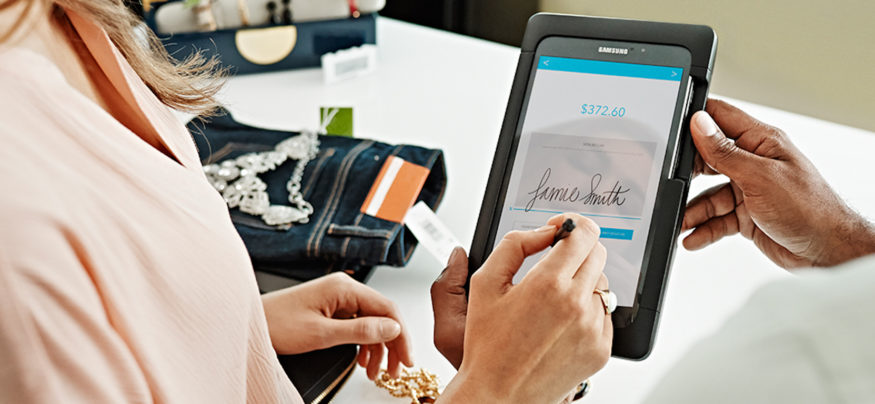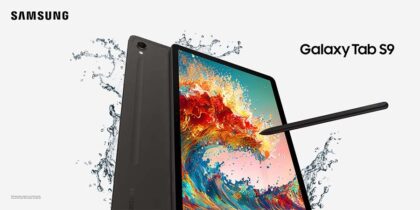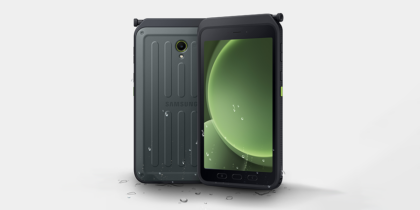Omnichannel consumers expect to continue their digital shopping experiences in-store, a factor prompting retailers to adopt a more versatile front end — one that provides functionality, assists shoppers on their path to purchase, meets compliance standards and most importantly, will scale with future needs. This new solution is the mobile point-of-sale (mPOS).
The traditional retail store is becoming a hub that merges the virtual and physical elements of the omnichannel model, and traditional POS is often inadequate in this setting. Instead, retailers need an automated front end integrated with all digital customer touch points and systems, including inventory, e-commerce and store operations. A catalyst that drives customer engagement, mPOS is designed to bolster customer service and keep associates abreast of more information than ever before.
In mobile POS systems, a robust processor connects to store operations, giving associates visibility into every aspect needed to complete a consumer’s path to purchase, including viewing merchandise availability, placing orders on out-of-stock items, applying loyalty points or discounts and even tracking shipments — all within one seamless transaction. These benefits have increased shipments of mPOS devices by 95 percent in 2015, according to “The Ultimate Mobile Playbook,” a report from Verifone.
Configurations vary, but many retailers opt for a removable tablet at the cash wrap, supported by a fleet of smartphone-style devices — a model that allows associates to assist shoppers through the entire shopping experience without ever leaving their side. However, hardware is only one piece of the equation. When selecting a solution, retailers must also ensure their mPOS system does the following:
Accepts a variety of payment options. As the omnichannel model supports a more flexible shopping experience, consumers expect to be able to use equally versatile payment options. One of the highest in demand is mobile payments.
With options such as Samsung Pay, shoppers can make purchases via their smartphones, using a service that already works with most card readers. Samsung Pay uses a combination of near-field communication (NFC) and the latest magnetic secure transmission (MST) technology to ensure that it works on both old and new payment terminals.
Currently, 30 percent of U.S. shoppers have used mobile wallets, and 61 percent would spend more with retailers that accept mobile payments, according to Verifone’s study. The flexible nature of mPOS allows retailers to adopt these solutions quickly, a move that responds strategically to consumer demand and streamlines the shopping experience.
Enables cross-sell and upsell opportunities. With integration with customer profiles and inventory levels, mobile POS enables associates to drive shopper engagement — and revenue opportunities — either in-aisle or during checkout. By accessing customer preferences and available inventory, associates can customize product recommendations and even locate merchandise that can be shipped to the store or the customer’s home.
Provides scalability and flexibility. Work with an open platform that can be used in conjunction with other in-store solutions, including digital signage or self-checkout, or customized to support functionality to help retailers differentiate themselves in the marketplace.
Includes the latest data security and compliance standards. As new payment and peripheral options are introduced, savvy criminals often emerge. Mobile is becoming an entry point of choice for cybercriminals, as many retailers often fail to safeguard networks or apps. Industry experts predicted that by 2017, 75 percent of mobile security breaches would be caused by mobile application misconfiguration, according to a statement from Gartner.
One method of warding off these cybercriminals is the Europay, MasterCard and Visa (EMV) mandate. As of October 2015, retailers were required to implement solutions that accept and process microprocessor chip-enabled payment cards. These smart chips authenticate the card, process transactions and are reportedly impossible to duplicate or hack. Retailers that don’t meet these benchmarks will be responsible for any credit card fraud committed in their stores, according to a report from RIS News.
Wary retailers can take a lesson from global retailers where chip cards are successfully decreasing fraud rates. For example, the United Kingdom has reduced face-to-face fraud by 72 percent since adopting EMV, and Canada’s domestic counterfeit fraud rate has dropped by 48 percent between 2011 and 2013, according to Verifone’s study.
Leverages industry partners’ expertise and support. In their journey toward mobile POS, some retailers may lack the insight or expertise to move forward. This is where strategic partnerships become paramount. Technology partners have the knowledge and experience in retail, mobility and payment security that brands need to launch a successful rollout, as well as the ability to scale the retail operation with fewer growing pains. Finally, working together as a team enables technology providers to use partner feedback to update and improve solutions.
Learn more about Samsung’s mPOS solutions in a range of mobile form factors featuring defense grade Knox security.







